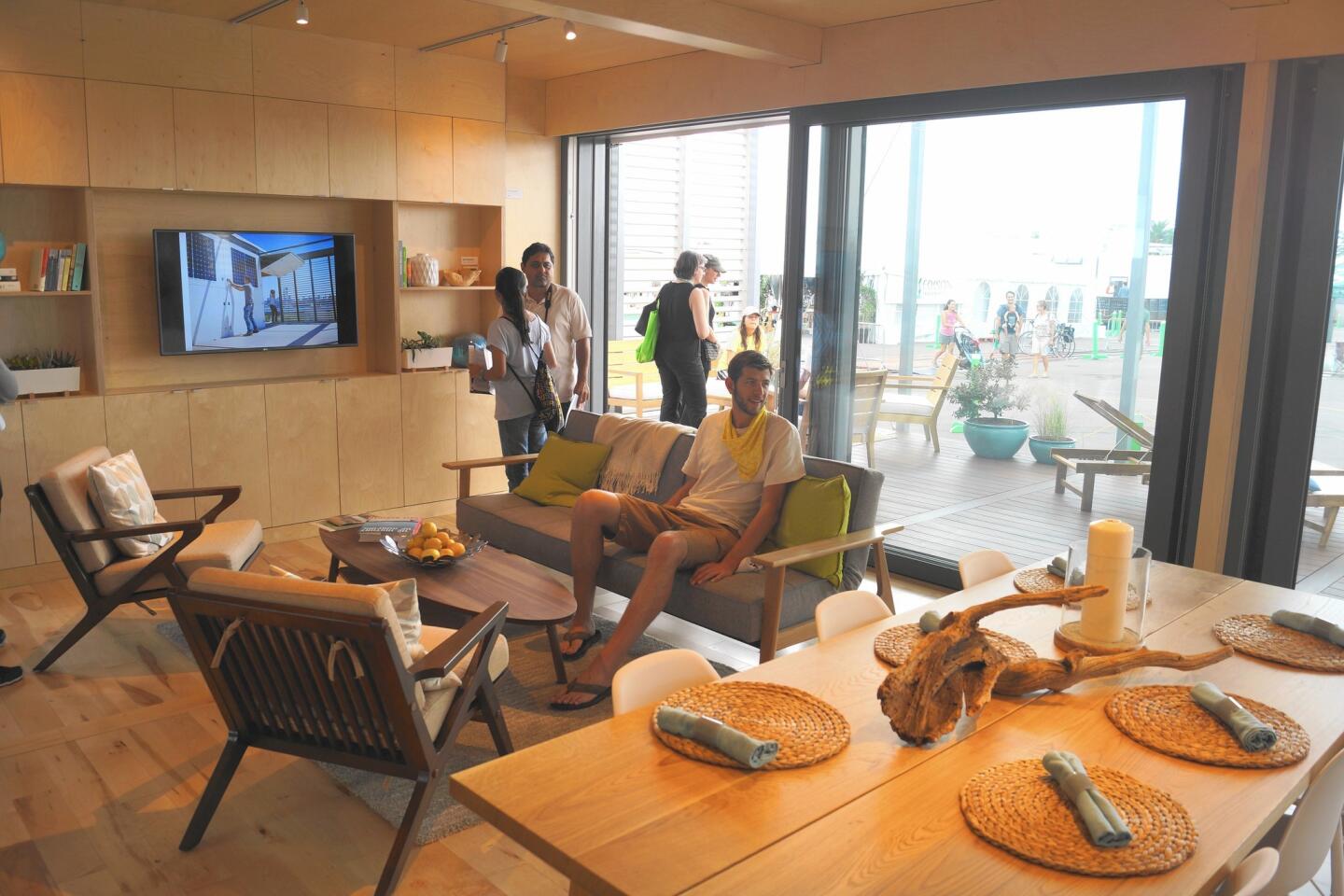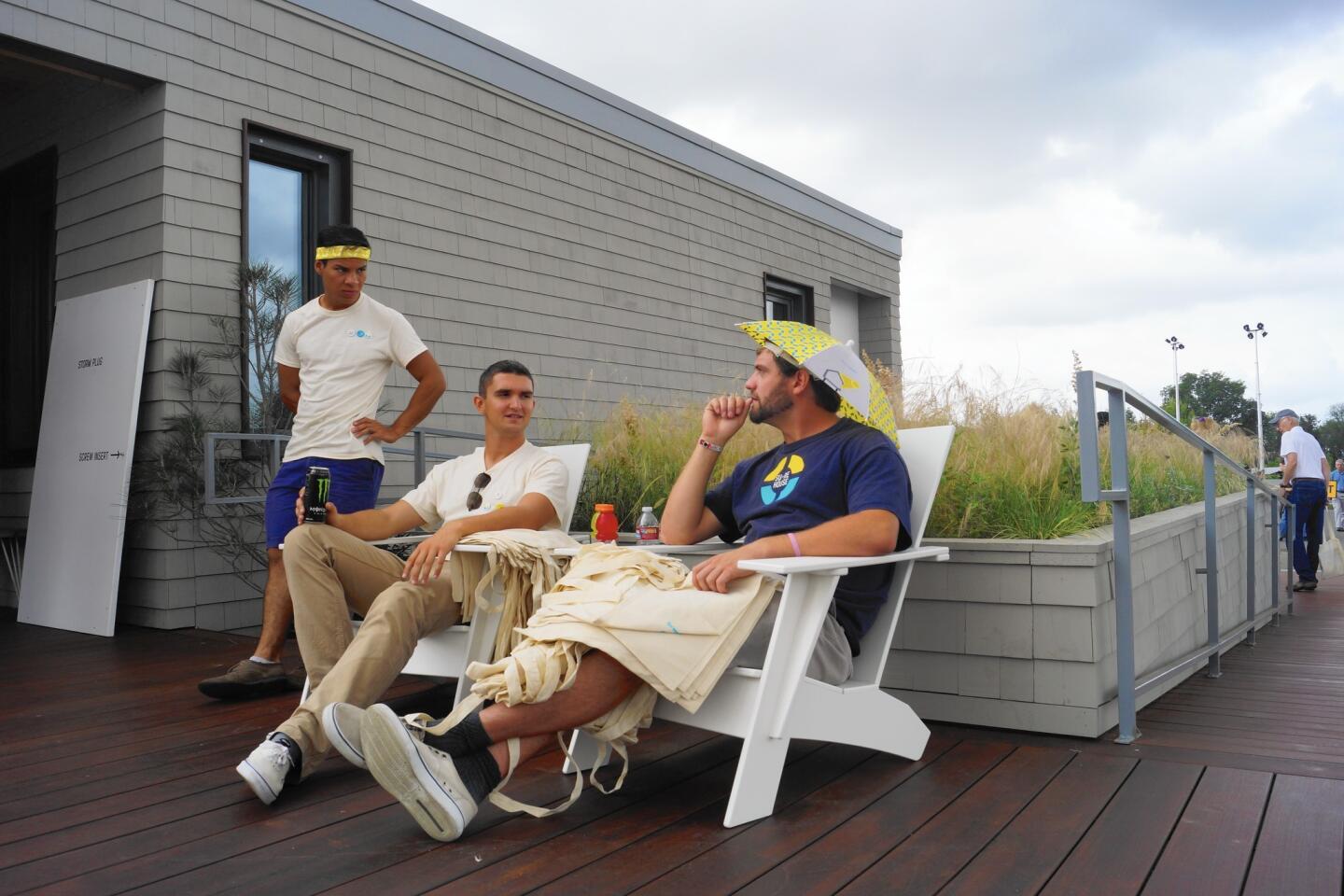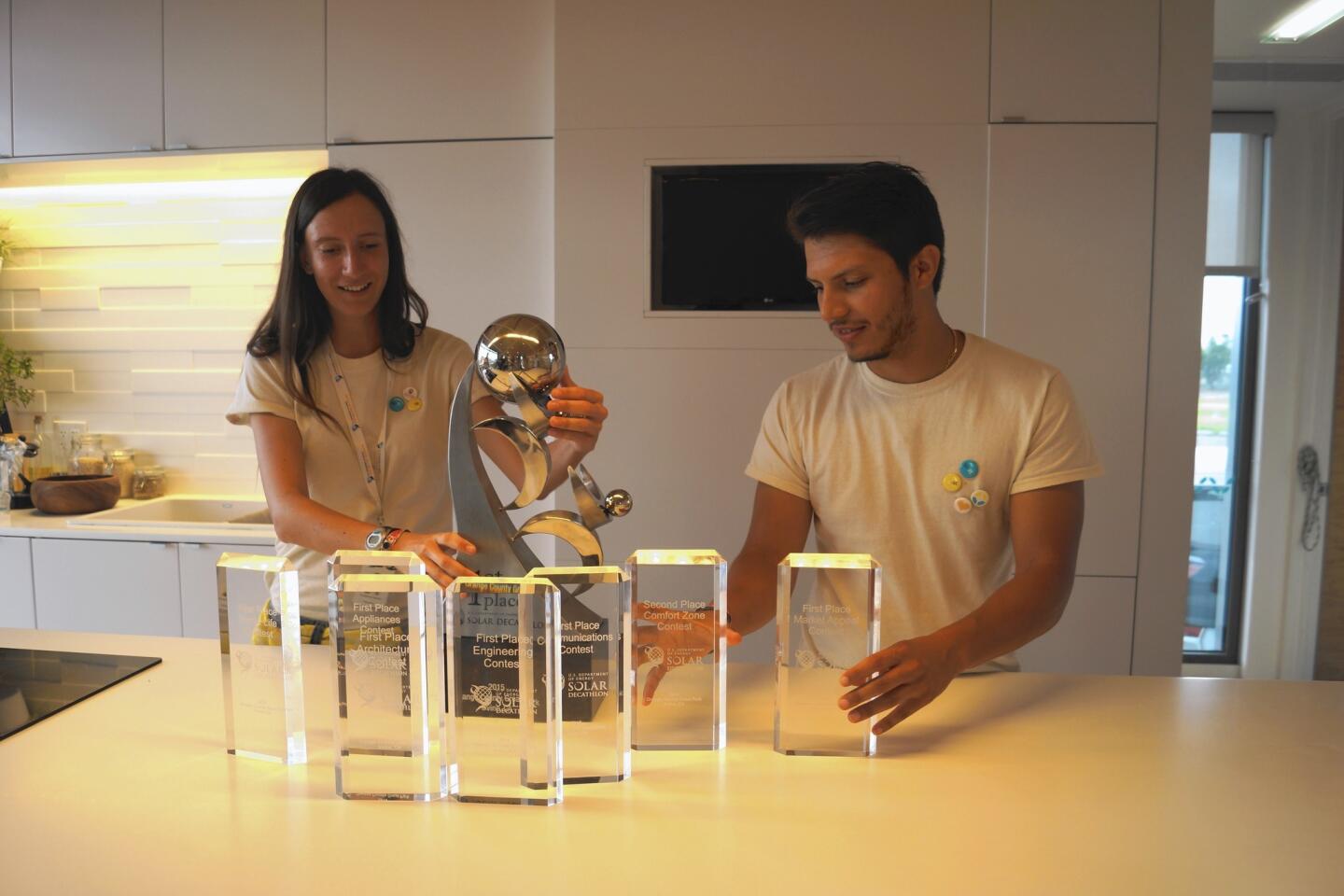Solar Decathlon names energy-saving winner
After 10 energizing days of competition, students from the Stevens Institute of Technology from Hoboken, N.J. and their Sure House powered through to the top spot in the 2015 Solar Decathlon, held at the Orange County Great Park in Irvine.
Winners of the Solar Decathlon were announced during an awards ceremony Saturday morning at the Great Park.
The inaugural Team Orange County, consisting of students from UC Irvine, Chapman University, Irvine Valley College and Saddleback College, took ninth place overall.
The bi-annual event gave 17 student teams from across the globe the chance to construct their own energy-efficient house and deliver it to the Orange County Great Park in Irvine for the competition. The teams spent two years designing and building their projects for the decathlon, organized by the U.S. Department of Energy.
The competition started on Oct. 8 and consisted of 10 contests that rated the houses on features such as architecture, engineering, market appeal and comfort of the home. Juries of experts in each of these categories took tours through all the project entries.
Team Orange County’s highest ranking was in Engineering where their Casa del Sol house finished with 92 points out of 100, just one point behind Stevens.
“Considering that Stevens has done this competition several times before, I’m very humbled and happy with what we’ve done,” UCI mechanical engineering students and project manager Alex McDonald said. “Never before had two community colleges participated and they’re going up against some of the best design teams in the world.”
Stevens took first place in seven contests, earning them the overall first place rank in this year’s decathlon.
Earlier this month, the students from Stevens broke their 994 square foot house into three modular pieces then had them lifted onto three flatbed trucks and transported on a cross-country journey to Irvine. All project entries arrived to the Great Park two weeks ago.
During the two-year project, around 70 students at the Institution contributed to designing and building the Sure House. Twelve of those students traveled to the competition in Irvine.
“In our house name, the ‘su’ stands for ‘sustainable’ and the ‘re’ stands for ‘resilient,’” Stevens civil engineering student Christine Hecker said. “After Hurricane Sandy ravaged the East Coast in 2012, we decided to build a house that could withstand a hurricane in dedication to that. The name Sure House is also a play-on word of ‘shore house.’ You know, like the Jersey Shore.”
To make the house strong enough to endure a storm, the students designed a special insulation system and storm shutters for the projects’ doors and windows.
The house walls have three layers of insulation. The outer most layer consists of ABS plastic.
“We first tested the plastic by building a box out of it and exposed it to water for 80 hours straight,” Hecker said. “Afterward, we opened the box and found that not a single drop of water went through.”
The Sure House insulation is almost 12 inches thick, whereas a typical house would have three and a half inches, the team said.
The insulation also helps the house use 90% less energy than a standard house in New Jersey. According to Sure House team members, the thick layer prevents outside any heat from coming in, keeping the house cool in summer, and any heat from coming out, keeping the house warm in the winter.
Besides design and engineering, the houses were tested on other features.
“Our appliances had to be fully functional,” Stevens mechanical engineering grad student A.J. Elliott said. “We cleaned a load of laundry in our dryer one day and cooked a peach cobbler in our kitchen on another.”
This week, most of the project entries will be taken apart and sent back to their respective hometowns.
Team Orange County plans to have Casa del Sol remain on display somewhere in Orange County and possibly at the Great Park to serve as a “learning lab” for park visitors for an undetermined amount of time.



